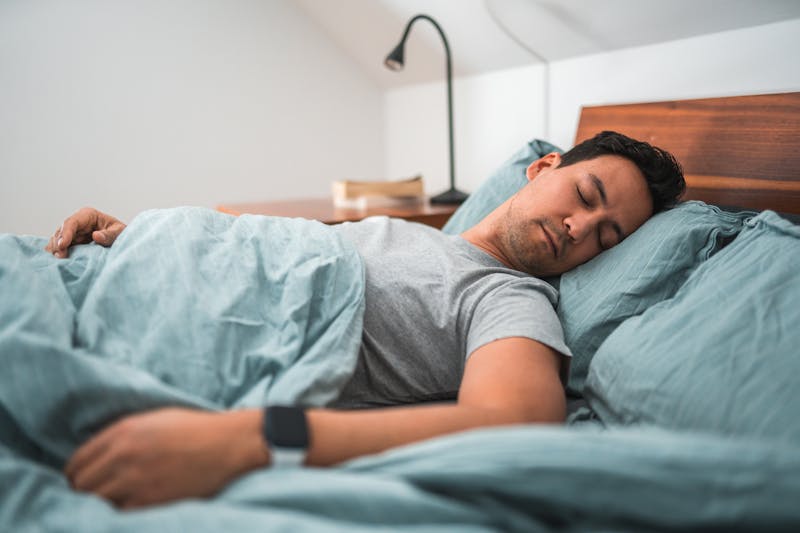
Sleep apnea is a common sleep disorder characterized by pauses in breathing or shallow breaths during sleep. These interruptions can occur multiple times throughout the night, disrupting sleep patterns and potentially causing health risks.
One of the common questions the South Florida ENT Associates professionals receive is whether the condition can be reversed. While a chronic condition that cannot be completely reversed, sleep apnea can be reduced. In this blog, we'll explore the factors contributing to sleep apnea, the treatment options available, and how we can help.
Understanding Sleep Apnea
Before discussing reversal, let’s review the two main types of sleep apnea:
Obstructive Sleep Apnea (OSA)
Obstructive sleep apnea (OSA) is the most common type and affects millions of people worldwide. It happens when the muscles in the throat relax too much during sleep, causing a partial or complete airway blockage. This blockage leads to pauses in breathing or shallow breaths, disrupting the sleep cycle.
Causes of OSA:
- Extra weight can lead to fatty tissue buildup around the neck and throat, increasing the risk of airway blockage
- Anatomical issues in the airway, like enlarged tonsils, a narrow throat, or a recessed jaw, can make people more prone to OSA
- OSA is more common in older adults and males, but it can affect people of any age or gender
- Family history may contribute to OSA, suggesting a genetic predisposition
Symptoms of OSA:
- Loud snoring, often accompanied by gasping or choking sounds during sleep
- Excessive daytime sleepiness, fatigue, and difficulty concentrating
- Morning headaches, dry mouth, or a sore throat upon waking
- Irritability, mood swings, and decreased libido
- Waking up frequently to urinate at night (nocturia) and restless sleep
Central Sleep Apnea (CSA)
Central sleep apnea (CSA) is less common than OSA and is characterized by a disruption in the brain's control of breathing, which leads to inadequate signals to the muscles responsible for breathing. Unlike OSA, which involves physical airway blockage, CSA is a neurological issue affecting sleep-breathing patterns.
Causes of CSA:
- CSA can develop as a complication of certain heart conditions, such as congestive heart failure, where fluid buildup in the lungs affects breathing regulation
- Conditions like stroke, Parkinson's disease, or brainstem lesions can disrupt the brain's control of breathing, leading to CSA
- Exposure to high altitudes can trigger CSA in some individuals due to changes in oxygen levels and breathing patterns
Symptoms of CSA:
- Episodes of interrupted breathing during sleep, similar to OSA but without the characteristic snoring
- Cheyne-Stokes breathing patterns, characterized by cycles of shallow breathing followed by deep breaths or pauses
- Difficulty staying asleep, frequent awakenings, and poor sleep quality
- Daytime fatigue, lethargy, and cognitive impairments
Can Sleep Apnea be Reversed?
Sleep apnea is a chronic condition that cannot be completely reversed, but its severity can be reduced, and in some cases, the condition can be effectively managed or improved.
CPAP machines are commonly prescribed for moderate to severe sleep apnea. These devices deliver a steady stream of air through a mask worn over the nose or mouth, preventing airway collapse and improving breathing during sleep. Consistent and proper use of CPAP therapy can significantly reduce apnea episodes and enhance sleep quality.
Here are some other ways to improve sleep apnea:
- By adopting a healthy lifestyle, including regular exercise and a balanced diet, individuals can reduce weight and alleviate sleep apnea symptoms
- For individuals with positional sleep apnea (where symptoms worsen when sleeping on their back), using pillows or positional devices can help keep the airway open and reduce the frequency of apnea episodes
- Dental devices, such as mandibular advancement devices (MADs) or tongue-retaining devices (TRDs), work by repositioning the jaw or tongue to keep the airway open during sleep
In cases where conservative treatments are ineffective, surgical interventions may be considered. Procedures such as uvulopalatopharyngoplasty (UPPP), maxillomandibular advancement (MMA), or implantable devices can help address anatomical issues contributing to sleep apnea.
Reduce the Impact of Sleep Apnea with South Florida ENT Associates
Sleep apnea can significantly affect your quality of life and overall health if left untreated. Luckily, SFENTA offers comprehensive solutions to help reduce the impact of sleep apnea and improve your condition.
South Florida ENT Associates provides advanced diagnostic services to assess the severity and underlying causes of sleep apnea accurately. Once diagnosed, our sleep specialists, ENT doctors, and otolaryngologists develop customized treatment plans tailored to your specific needs and preferences. Regular follow-up appointments, compliance monitoring, and patient education sessions are essential to our comprehensive approach to managing sleep apnea.
By partnering with SFENTA for sleep apnea management, you can access leading-edge diagnostic technologies, personalized treatment plans, lifestyle guidance, ongoing support, and a multidisciplinary team dedicated to improving your sleep health and overall well-being. Don't let sleep apnea impact your life—take proactive steps with SFENTA for a restful and revitalizing sleep experience. Contact us today to schedule your consultation.

